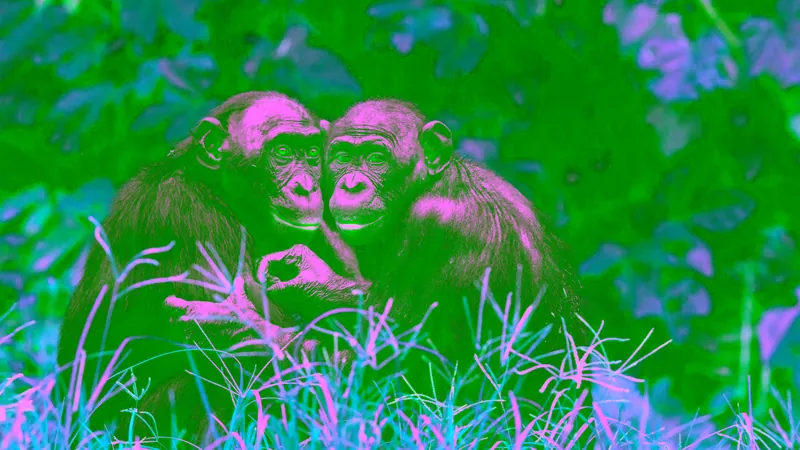
Bonobos Unveil Secrets of Their Unique Language System – Are They Smarter Than We Thought?
2025-04-03
Author: Ting
Bonobos Unveil Secrets of Their Unique Language System – Are They Smarter Than We Thought?
In a groundbreaking study, researchers have found that bonobos—great apes closely related to humans and chimpanzees native to the Republic of Congo—might possess a form of communication that resembles a rudimentary language. Led by evolutionary anthropologist Melissa Berthet from the University of Zurich, the team discovered that bonobos can combine simple vocal calls—such as peeps, hoots, yelps, grunts, and whistles—into complex structures that convey richer meanings. This phenomenon, referred to as non-trivial compositionality, challenges the long-held belief that such linguistic abilities were unique to humans.
Unlocking the Bonobo Language
Berthet and her team meticulously compiled a database of 700 distinct bonobo calls, utilizing advanced techniques from distributional semantics—a method historically used to unravel ancient languages like Etruscan and Rongorongo. Through this pioneering study, researchers have begun to illuminate what bonobos communicate to each other in their natural environments.
The Bonobo Communication Lexicon
The findings revealed a fascinating array of meanings associated with individual calls. For instance, simple grunts were interpreted as an attention-seeking signal, akin to saying 'look at me.' Yelps served as imperative commands meaning 'let's do this,' while peeps were more suggestive, conveying 'I would like to...'. Furthermore, low hoots indicated excitement, and high hoots played a crucial role in alerting others to danger. Whistles were used to signal the importance of staying together.
Unraveling Complexities and Future Directions
While this research has already shed light on bonobos' communicative skills, questions linger about the potential nuances of their vocalizations. Berthet notes that subtle variations in the acoustic qualities of these calls may hold even deeper meanings, suggesting their communication may be more intricate than currently understood. Furthermore, the influence of gestures accompanying vocalizations could further alter the meanings intended by the bonobos.
Looking ahead, Berthet and her team chair an ambitious initiative to explore similar compositional capabilities in other animal species. They aim to apply their innovative methods to study communication among chimpanzees, gorillas, gibbons, and other primates. This cross-species investigation could provide vital insights into the evolutionary trajectory of language and meaning in primates, challenging our previous assumptions about when and how these abilities emerged.
As this groundbreaking work evolves, it raises exciting questions: Could non-trivial compositionality exist in other animals? What does this mean for our understanding of language as a fundamental aspect of cognition? The answers could redefine our perspective on primate intelligence and communication, offering a glimpse into the rich tapestry of animal interactions that may mirror our own linguistic capabilities more closely than we ever imagined.
Stay tuned as the world of animal communication continues to unfold!




 Brasil (PT)
Brasil (PT)
 Canada (EN)
Canada (EN)
 Chile (ES)
Chile (ES)
 Česko (CS)
Česko (CS)
 대한민국 (KO)
대한민국 (KO)
 España (ES)
España (ES)
 France (FR)
France (FR)
 Hong Kong (EN)
Hong Kong (EN)
 Italia (IT)
Italia (IT)
 日本 (JA)
日本 (JA)
 Magyarország (HU)
Magyarország (HU)
 Norge (NO)
Norge (NO)
 Polska (PL)
Polska (PL)
 Schweiz (DE)
Schweiz (DE)
 Singapore (EN)
Singapore (EN)
 Sverige (SV)
Sverige (SV)
 Suomi (FI)
Suomi (FI)
 Türkiye (TR)
Türkiye (TR)
 الإمارات العربية المتحدة (AR)
الإمارات العربية المتحدة (AR)